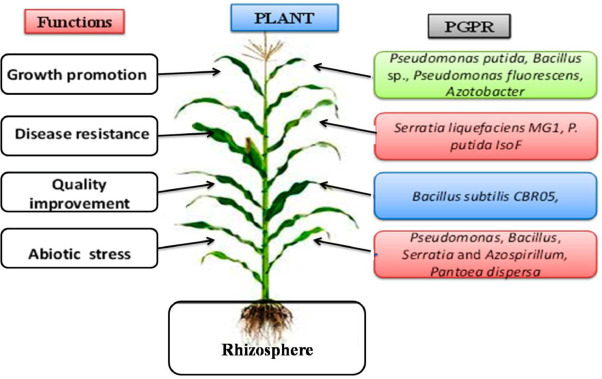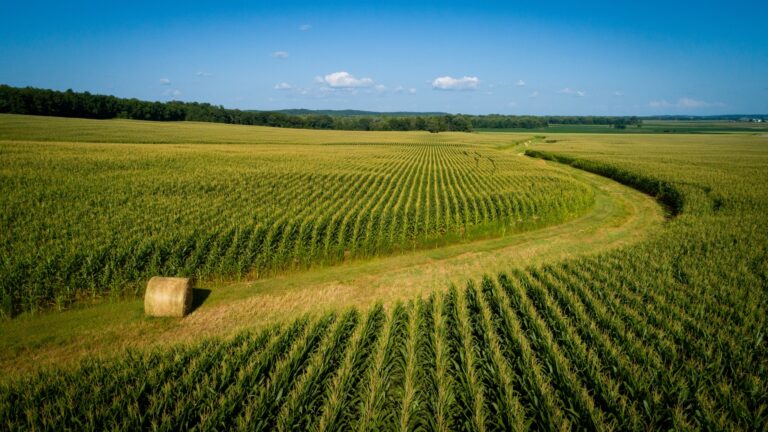2023 October Stewardship Advocate
MICROBIAL PRODUCTS FOR CROP PRODUCTION
Agricultural microbials refer to the microorganisms used in agriculture to enhance crop productivity and yield quality. During the last few years, there has been a significant increase in the development and availability of microbial products that claim to improve crop production. These products are alternatives or partners to chemical inputs. Products of microbial origin have been termed “biologicals” or “microbials” and these terms are often used interchangeably. Microbials have numerous modes of action including plant growth-promotion, biological pest control and probiotics for plants.
The recent growth of companies developing and marketing microbials has encouraged more interest in these products; yet because they are relatively small and new, public information related to this industry is limited. Reports of the global agricultural microbials market size vary from $5.1 billion in 2022 (The Business Research Company, Agricultural Microbial Global Market Report 2023) to $6.9 billion (Research and Markets, 2022). The growth of the microbial market is projected to grow to $6.02 billion in 2023 and then to $10.54 billion in 2027 at a compound annual growth rate (CAGR) of 15% during the forecast period according to the Business Research Company. Using another estimate from Research and Markets, the growth from the 2022 base of $6.9 billion is projected to be $18 billion by 2028 with a 14.8% CAGR. Microbials have unique properties that interact with the environment, plants and soils that affect their function and efficacy as a supplement or as a replacement for a more traditional input. The concentration of the microbial active ingredient is commonly expressed in colony forming units per milliliter (CFU/mL). CFUs define the number of viable bacteria or fungi capable of multiplying and forming a colony. The microbial product properties should be clearly stated on the label.
Many biotic and abiotic elements are involved in the efficacy of a microbial product. These include both soil and atmospheric conditions. Weather, soil fertility and microbes in the soil can all influence whether a microbial product has a positive effect on the crop. Because of the number of variables involved, it is important for farmers to discuss with the company marketing the product if the product has been tested under similar conditions to what the farmer has on their farm.
Plant growth promoting rhizobacteria (PGPR) and plant growth promoting fungi (PGPF) are important biofertilizers. These two have a vast range of use in the field of agriculture but the chief purpose of their utilization is to enhance productivity by promoting growth of plants and inhibiting pathogens. Thus, the main applications of these two bio-fertilizers are in the form of growth promotion and as a bio-control agent (Figure 1).

The Iowa Corn Promotion Board is developing a white paper and other informational materials that delve into all the aspects of microbial products, including a series of questions for farmers to ask microbial product providers to ensure they understand the types of products, product claims and how to use them properly.
Latest Information
EPA Releases Draft Strategy to Better Protect Endangered Species from Herbicide Use | US EPA
Crop Insurance Discount Program for Cover Crops Opens December 1, 2023
Secretary Naig Announces New Phase for Northeast Iowa Water Quality Project
Iowa NRCS Sets Nov. 3 Cutoff for Conservation Program Applications
Working with Farmers to Increase Adoption of Water Conservation Practices
Tools of the trade: A robust dataset for drainage – Drainage Contractor
Farmer to Farmer
Several Iowa Corn grower leaders participated in the Iowa Nitrogen Initiative with their own on-farm trials. Kelly Nieuwenhuis who farms near Primghar has participated in the initiative for the last two years and says “The Iowa Nitrogen Initiative has been very easy to work with. I’ve done grid soil testing on both corn on corn, and corn following soybeans. Nitrogen application rates in the plots vary from 0 to 240 lbs. per acre on corn after corn and 0 to 210 lbs. per acre on corn after soybeans. I’ve learned so far that more nitrogen doesn’t mean more yield. In fact, when the nitrogen rate gets over our normal application rates, yields have mostly gone down. The value to me is knowing we can cut rates without sacrificing yield, and that organic matter doesn’t get enough credit for fertility values.” Kelly is looking forward to this year’s results to compare them to 2022.
Upcoming Events
November 6-8: Anaerobic Digestion on the Farm Conference; Ames
November 9: Conservation on Tap in Cumming; Cumming
November 13-17: Pro Ag Outlook and Management Series; Webinar
November 16: Cover Crop, Soil Health and Water Quality Field Day; Gilmore City
Throughout November: Iowa Learning Farm Webinars
